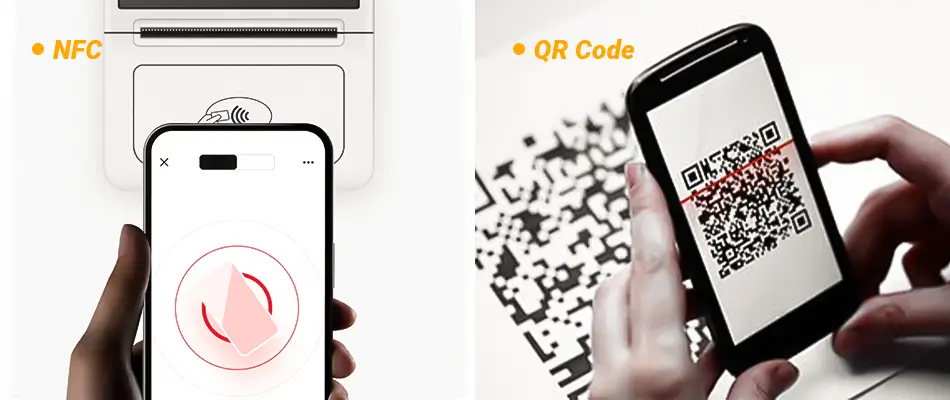In today’s fast-paced, contactless world, technologies like NFC and QR Codes have become essential tools for businesses and consumers alike. But what happens when these two innovations converge? Let’s explore their unique strengths, differences, and the game-changing potential of combining them—with a spotlight on hybrid solutions like NFC QR Code Menus.
A QR Code (Quick Response Code) is a two-dimensional barcode designed to store information in a grid of black and white squares. Invented in 1994 by a Japanese automotive company to track vehicle parts, QR Codes have evolved into a universal tool for sharing data like URLs, payment details, and product information.
Accessibility: Scannable by any smartphone camera.
Cost-effective: Free to generate using online tools.
Versatility: Used in marketing, payments (e.g., Alipay, Venmo), event ticketing, and even COVID-19 health passes.
NFC (Near Field Communication) is a short-range wireless technology enabling data exchange between devices within ~4 cm. Embedded in smartphones, cards, or tags, NFC powers contactless payments (Apple Pay, Google Wallet), transit cards, and smart home interactions.
Speed: Tap-to-action takes milliseconds.
Convenience: No app or camera needed—just a proximity touch.
Security: Encrypted data transfer reduces fraud risks.

| Aspect | QR Codes | NFC |
| Tech Principle | Optical scanning | Electromagnetic radio waves |
| Range | Requires line of sight (up to meters) | Ultra-short range (~4 cm) |
| User Action | Open camera app, aim, scan | Tap or hover device |
| Device Support | Works on all smartphones | Requires NFC-enabled hardware |
| Security | Vulnerable to tampering | Encrypted, harder to intercept |
| Cost | Free/low-cost | Higher (tags, hardware integration) |
Shared Strengths:
Contactless interaction.
Bridge physical and digital experiences (e.g., menus, ads).
QR Code Pros:
Universally accessible, even in low-tech environments.
Ideal for one-time use (e.g., Wi-Fi login, promo codes).
QR Code Cons:
Requires stable lighting and camera focus.
Perceived as "less premium" for high-end brands.
NFC Pros:
Effortless, futuristic user experience.
Enhanced brand perception (e.g., luxury retail).
NFC Cons:
Limited adoption in budget smartphones.
Higher upfront costs for tags.
Hybrid solutions leverage the best of both worlds: QR’s accessibility and NFC’s convenience.
Use Cases:
Retail: Product tags with both NFC (instant specs) and QR Codes (reviews).
Tourism: Posters with NFC for audio guides and QR Codes for maps.
Events: Badges with NFC for entry and QR Codes for session schedules.

Imagine a restaurant menu that caters to all customers:
QR Code: Diners scan to view the menu on their phones.
NFC: Tap a tabletop tag to instantly load the menu without opening the camera.
Flexibility: Appeals to tech-savvy and traditional users.
Analytics: Track engagement via QR scans and NFC taps.
Hygiene: Permanent NFC tags reduce replacement costs vs. printed QR codes.
While QR Codes dominate mass adoption and NFC excels in premium use cases, combining them creates seamless, inclusive experiences. Solutions like NFC QR Code Menus exemplify this synergy—offering businesses a way to future-proof their operations while meeting diverse customer needs.
Ready to upgrade your customer experience? Explore how NFC and QR Code integrations can transform your business today.
Welcome to contact us!
RFIDSilicone is Your Best RFID & NFC Partner!
19+ years experience in RFID products (RFID wristband, RFID sticker/tag, RFID card etc).
Our own factory passed ISO9001: 2015 & ISO14001:2015. We have SGS, ROHS, REACH, FDA certificates etc.